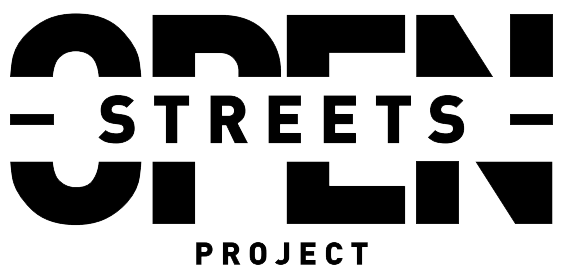The best Open Streets programs achieve the greatest impact on community health and well-being through a well planned, well programmed route. A well planned route ensures easier participation, route activation and ultimately future growth of your program. Nothing will play a larger role in determining the success of your Open Streets program than the route. The points below are intended to help you create the most impactful, and dynamic program for your city.
So how to choose the optimal route? What kinds of programming bring the most energy and value to your Open Streets? Let’s dig deeper.
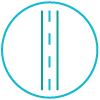
The Spine
Identify your city’s most iconic streets. These are the streets where people already love to go, where tourists love to visit, and what’s on postcards featuring your city. This iconic street will act as the spine of your route and be the anchor of your Open Streets program.
The spine of your route is not a freeway, bridge, or parkway. Open Streets programs thrive when they take place on streets where people want to go, where there are business, attractions, parks, and other amenities to enjoy. No one thinks of a highway as a fun place to visit and no one ever traveled to a city due to the beauty of their freeways. Dynamic streets draw people to them with their vibrancy, and they will do so even more during your Open Streets program.
Video: NYC Summer Streets on Iconic Park Avenue
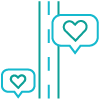
Connect to Existing Features
Identify local attractions like libraries, museums, community or recreation spaces, parks, entertainment centres, or bustling business districts and connect them to the spine of your route as these are natural attractions, usually with existing activities to highlight.
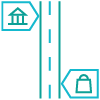
Neighbourhood Connections
Participation in an Open Streets program directly correlates with people’s proximity to the Open Streets route. People come to Open Streets when they are within 15 minutes of the route – a 15 minute walk, bike, transit trip, or drive. Be sure to connect your route with high density neighbourhoods of varying socio-economic demographics.
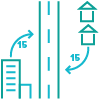
Bring It All Together
Link your spine, existing features and neighbourhood together to create a route that is:
- 6 miles/10km long for cities with 250,000+ people
- 3 miles/5km long for cities with less than 250,000 people
These suggested lengths are what we recommend as starting points for new Open Streets programs. Your route should continue to grow with each new season of your program, connecting to more neighbourhoods and more people.

Day of the Week
Sunday is the most common day of the week for Open Streets programs to take place (New York, NY and Long Beach, CA’s Open Streets’ take place on Saturdays). Traffic congestion is often at it’s lowest on Sundays, and many businesses open late or do not open at all. As the most common concern about Open Streets raised by stakeholders is impact to traffic, scheduling the program for a Sunday is the easiest way to address that issue. But if Saturday is an option in your city, try it out!

Time of the Day
From 7 in the morning until 4 in the afternoon, there is a wide range of start and end times utilized by Open Streets programs across the world. Best practices dictate that a program length of at least four hours, with a couple of hours in the morning, and couple in the afternoon work best. By allocating some program time to the earlier hours in the morning, you are ensuring that elderly participants, those with mobility devices, and small children have a less populated route to enjoy. Fostering that sense of safety and comfort for more vulnerable participants is key in ensuring their turn out. The afternoon hours often see larger number of participants, and are prime hours for businesses to interact with the program.
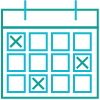
Number of Program Dates
Deciding on the number of program dates for your Open Streets seasons can be tricky. A number of factors must weighed, including finances and permissions from city hall. Once initial logistics are figured out for your first program date, the cost per date goes down with each successive date (there is an economy of scale working in your favour here) so why not do as many as possible? Doing only one program is risky and not recommended.
There are compelling reasons for multiple program dates:
- You want to send the message right from the get-go that you are building a health program, not an event. You are trying to provide your community with a consistent opportunity to get active.
- Open Streets grows through word-of mouth. You need multiple dates to make the most of the enthusiasm and excitement people will have by participating in your program.
- You are at the mercy of the weather. One rainy day could really hurt your chances of making the case for your program in the future.
- Multiple program dates provide an opportunity to make improvements and iron out any kinks as you go – you want to leave people with the best possible impression.
The exact number of program dates will depend on the specifics of your city, but the more programs, the larger the positive impacts.

Potential Route Obstacles
Now that you have your ideal route, you need to carefully look for any potential obstacles or challenges that Now that you have established your ideal route, you need to carefully look for any potential obstacles or challenges that could occur and develop a strategy to mitigate them. In most cases, you will not have to change the route and the challenges can be overcome with some flexibility and problem solving. Areas where potential challenges could occur include:
- Fire stations and medical centres
- Freeway on and off ramps
- Access to churches and other major institutions
- Major transit hubs
- Access to buildings or facilities for disabled individuals
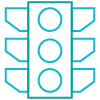
Traffic Congestion Concerns
Unlike other street closure events, Open Streets programs have select intersections open along the route to allow traffic to flow perpendicular to the street closure. This alleviates traffic congestion as traffic does not have to completely bypass the Open Streets program. Watch this video for a demonstration of how these car crossing points commonly operate along an Open Streets route:
Only intersections critical to traffic flow should remain open. Ideally, an open streets route would be designed with the assistance of a traffic engineer to identify what intersections can be closed and what intersections must stay open. Operationally, the fewer open intersections you have the easier the route is to manage.
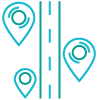
Complementary Programming
In addition to opening streets to people, Open Streets programs also have activity hubs of complementary programming focused on health and well-being strategically located in publicly accessible spaces along the route. Activity Hubs are important because:
- They pull open streets participants along the route by sparking participants’ curiosity. If they can see or hear something ½ a mile ahead of them, they are more likely to travel there (by walking, cycling, skating, etc.) to see what’s there. (You’re secretly encouraging them to travel further using an active form of transportation!)
- They offer a space for people to slow down without disrupting the flow of pedestrians, cyclists, skaters, strollers, etc. While they are in a hub you have a captive audience for an educational conversation, for a survey, or for an introduction to a new physical activity.
- They can act as a window into a new neighbourhood that an open streets participant may have never explored, if you organize your hubs based on neighbourhoods.
- They offer activities that engage an audience broader than cyclists or walkers. For example, an individual might not want to ride a bike but they like aerobics and therefore will still participate in the program because aerobics are being offered at an Activity Hub along the route.
- They offer service providers and businesses an opportunity to connect with a new audience in a new way.
Activity Hubs of complementary programming are typically organized by a Hub Captain. This individual, typically a volunteer, ensures that all the needs of activity providers are met in terms of their logistical requirements. For example, if you are offering electricity to activity providers the Hub Captain would ensure providers know where accessible outlets are. Alternatively, hub organization could be outsourced to a particular organizations such as a public health department and they could organize the space themselves without support from a Hub Captain – this method is particularly common in parking lots being used as hubs that belong to a particularly supportive organization. Outsourcing hub organization also makes the overall open streets planning process less onerous on the organizing body.
There are a variety of activities that can be provided in a Hub at an Open Streets program. Overall, the types of programming provided should complement the goals of your program. If your program is primarily geared towards creating healthy active communities, then your programming should reflect that with physical activity classes, health education promotion etc. If the main goal is community cohesion, then offer activities for people to slow down and meet one another. Most likely your program will end up with a diverse group of activities based on available resources, local geography and stakeholders, businesses located along the route, and sponsorship partners. Keeping your program goals in mind when reviewing potential programmers will help in your decision making process. Similarly, ensuring that all activities are free maintains your Open Streets program as a space where everyone, regardless of ability or socio-economic status, can come out, improve their health, and feel their streets are their own.
If all else fails, keep in mind the KISS principle: keep it simple, stupid! Keeping the activities in a hub as simplistic as possible requires less time for set-up and take-down, fewer financial resources, and far less red tape to wade through. Don’t underestimate the power of some music, skipping ropes, and hula-hoops.
So who exactly provides the activities?
Hub activities are provided by programming partners. These partners can be agencies, organizations, businesses, clubs, individuals, governmental departments or anyone else that has the capacity to provide an activity in the hub. We recommend issuing a “Call for Open Streets Activity Hub Programming Partners.” See our template to help draft your call.
Activity Hub Partner Call TemplateKeep in mind that Open Streets programs should be barrier-free, and accessible.
It’s very important to keep in mind that Open Streets programs are focused on mobility/community connections/neighborhood exploration/building a better city for people health –don’t turn your hubs of complementary programming into busker festivals, flea markets, a field of food trucks or a beer garden. While those kinds of activities can be part of an Open Streets, it’s necessary to ensure they are not the dominant form of programming.
Interested in what other programs have done for activities? Take a look:
Open Streets Bingo
Open Streets Minneapolis created a bingo card for their 2012 initiative, giving participants the opportunity to participate or view various activities along the route in exchange for the chance to win prizes.
CicLAvia Walking Tour Guide
Description of Walking Tours along the CicLAvia route, as well as additional information about programming along the route.
